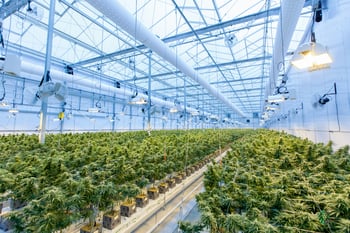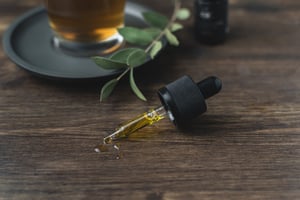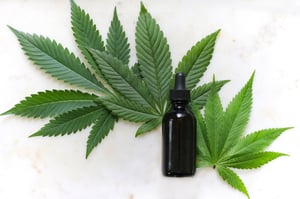 What causes hemp plants to flower and reproduce? And what causes these plants to produce cannabinoids?
What causes hemp plants to flower and reproduce? And what causes these plants to produce cannabinoids?
The answer is light.
Hemp is an incredibly photosensitive plant. This means it has a more pronounced chemical response to receiving ultraviolet (UV) light photons. When there are changes to the amount of light a hemp plant receives, it starts to flower and reproduce by setting seeds.
This is a natural process like photosynthesis; it’s a reaction to changes in the amount of sunlight throughout the year. A transition from long, bright, sunny days to shorter, darker ones sets off the hemp plant’s hormones into its flowering and reproductive cycle.
Think about it: Shorter days mean winter is coming. Hemp plants want to pass on their genes. To anticipate the beginning of winter, these plants begin the reproduction process.
Hemp does not enter the reproductive cycle because of the physiological maturity of the plant, like other crops. It happens because of plant proteins that develop thanks to the light-sensitive hormones in the hemp plant and the changing seasons.
Hemp, Light, and CBD Production
Hemp plant reproduction isn’t the only thing triggered by the amount of sunlight; the amount of light a hemp plant gets can affect the cannabinoid (CBD) levels, too. Cannabis sativa (hemp) plants can have different levels of CBD based on the photoperiod, light quality, and light intensity.
The only difference between hemp plants for CBD products and hemp for fiber production is the CBD content level. For hemp fiber, the cannabinoid level needs to be 0.03 percent or lower. This difference is minimal; it requires careful monitoring from growers. Hemp is a robust plant that can grow in less-than-ideal conditions, but it needs the right amount of quality light at the right times to maximize CBD levels.
Thanks to growing lights, indoor growers have complete control over the light their hemp crops receive. Decreases in light periods cause hemp to flower, which in turn causes hemp to produce higher levels of CBD, increasing each plant's potency (and the value).
Since the shortening of the number of hours of light a hemp plant receives is what triggers it to begin the flowering and reproduction process, growing lights are vital to the success of the crop. The creation of CBD happens during a female hemp plant’s flowering phase and ends when the plant is fertilized and starts to produce seeds.
In clinical tests, light can affect the quality of the cannabis plant by affecting the accumulation of different cannabinoids, altering the potency. Growers must find the optimum light spectrum with their growing lights to grow a fully potent hemp plant.
How a Spectrometer Can Help
For outdoor farmers, much of the success of their growing season is dependent on the weather, the humidity and the amount of sunlight. This limits the time of year that plants can be grown and harvested.
Indoor farmers, however, are not limited by the problematic light and weather conditions presented in outdoor growing. As such, indoor cropping can be 15 to 30 times more productive than outdoor cultivating.
But hemp farmers need to ensure that their growing lights are providing the right amount of light during the day. Since CBD levels can vary from crop to crop based on the amount of light they receive, the potency of hemp oil must be tested and verified using a spectrometer.
A spectrometer like the BSS1700 Scanning Spectrometer offers instant, accurate readings of the amount of cannabinoids present in a sample of hemp seed oil. With information about the potency of hemp oil, farmers can refine their growing light procedures to adjust the CBD levels of their crops.
The levels of cannabinoids in hemp oil samples also can be tested using the BS-F1000 Compact Fiber Beat Sensor. After calibration, this sensor uses polychromator spectroscopic methods to test each sample rapidly for the concentration levels of CBD and THC in each sample of hemp seed oil.
Indoor hemp growers can optimize their CBD-based crop yields by finding the perfect balance in the amount of light each plant receives. The best way to determine the best intensity, quality and exposure time for their crops? By testing the potency of the hemp oil for levels of CBD. Using a spectrometer to evaluate samples means growers can adjust these light levels based on their needs.
Are you searching for the right instrument to analyze CBD levels in your hemp? Our engineers at Kett have been working in both the agricultural and pharmaceutical industries for years. What does this mean for you? We’re the perfect consultants to find the exact instruments you need. Contact us today to find out more.

